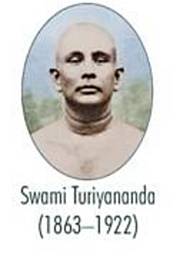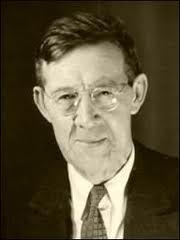1. Ascertaining the period in the Master’s life, when he had especial manifestation of the divine mood
The Master, we have said before, brought his Sadhana to a close by performing the worship of Shodasi, the divine Mother, in A.D. 1873. It will not, therefore, be improper to say that from then on he performed all the actions of his life under the impulse of the divine mood. The Master was then thirty-eight years old. So, that mood continued through his life for a little more than twelve1 years. During this time, all his actions assumed an extraordinary novel character by the will of the universal Mother. Under the impulse of that will, he applied his mind to establish religion among those persons who had a modern Western education. It is therefore clear that at the end of the full twelve years’ practice of penances, the Master spent six years in getting acquainted with his own power and the spiritual state of the people in general. Thereafter he was seen engaged with unrivalled energy in the task of re-establishing the eternal religion and arresting the decline of religion that came on India under the strong impulse of Western ideas and ideals which preached that this world was all in all. He retired from this world after bringing to a close the said task. Now we proceed to record, according to our capacity, how he accomplished this divine task.
2. Why we hold the last twelve years of his life to be the period of the especial manifestation of this mood
The reader might think, from what we said before, that the Master remained in the mood of a spiritual aspirant till his thirty-ninth year. It was not so. We tried to explain before in the Third Part of the book that all those who have received the reverence and adoration of the world as Gurus, prophets or founders of religions, for leading humanity to the realization of spiritual truths, were seen to have manifested those qualities even from their childhood. In the Master’s case too we find the expression of these in all the stages of his life, including his childhood. We have seen that under the impulse of these, he did many things during the time of his Sadhana in his youth. And since the completion of his Sadhana at the age of thirty-two, we find him doing almost everything with their help when he went on pilgrimage with Mathur; all his deeds during this time and afterwards were undertaken under the same inspiration. So, the reason why we date the manifestation of his divine mood and his application of himself to the establishment of religion from A.D. 1875 is that since then his divine mood was in one continuous flow and the mission of his life was clearly and definitely undertaken; we find him firmly taking his stand against Western materialism and the culture and civilization based on material science. For, it had entered India and made the men and women of the country assume an outlook on life which was contrary to that of the eternal religion and was daily weaning them from it. So he applied himself whole-heartedly to the introduction of true religion among these English-educated people, so that through his guidance the lives of the people in general might be blessed with the light divine.
3. The Master with the help of the divine mood has freed India from the evil effects of the onrush of Western culture and civilization
It is needless to say that there arose an especial need for doing so. The national character of India and the eternal religion, it seems, would have been completely destroyed, had not, by the will of God, the Master’s life, established in the divine mood and possessed of extraordinary spiritual power, stood against it. A little reflection shows us that just as the Master’s practice of all religions and his unique achievements therein, leading to the discovery of the grand truth, “As many faiths so many paths”, have brought blessings on all peoples of all countries for all time to come, even so, the simple fact of his spending the twelve long years of his ideal divine life, before those who were being carried away by the storm of Western ideas and ideals, served as a beacon light to them and made them return to their eternal religion, which was thus re-established. The flood-gate was closed and India was saved from a terrible catastrophe. Thus the twin purposes of his life were clearly borne in on us. Firstly, he brought all the extant religions of the world into line with the eternal religion of India and demonstrated that all of them were perfectly true and that they were many and various only because the tastes and tendencies of groups of people were many and various. And secondly, he saved the soul of India, its eternal peace and goodwill, from being caught in the whirlpool of Western materialism based on self-aggrandizement and breakneck-competition. Western education was introduced into India in 1836 and the Master was born in that very year. One, therefore, is simply astonished to see the simultaneous birth by the dispensation of Providence, of the two movements, namely, the blast of the Western system of education, which was designed to sweep India from off her culture and civilization and the counterblast by which the evils of that system would be rendered innocuous, leaving free and clear the atmosphere in which the merits of the new system might be detached and then incorporated with India’s own distinctive culture, much to her advantage.
4. When does the divine mood come into play in human life?
The fullest realization of the divine mood, the finale of the spiritual drama, is very rarely seen in human life. When the Jiva, tightly bound by the fetters of his actions, gets liberated by the grace of God, he gets but a faint taste of this mood. For, when the control of the internal and external senses of a man becomes as easy and natural as his breathing; when, losing its identity in the love of the supreme Self, his little I-consciousness merges for ever in the indivisible ocean of Existence-Knowledge-Bliss Absolute; when, melted in the Nirvikalpa Samadhi, his mind and intellect get rid of all kinds of dross and assume Sattvika forms; and when the series of desires in his mind, scorched to ashes by the fire of the divine knowledge, can no longer give rise to new impressions and fruits of actions—it is then and then only that the sweet play of the divine mood starts in him and his life is blessed beyond measure. It is very rarely that one has the opportunity of meeting a person blessed with the full manifestation of the divine mood and enjoying an unbreakable peace and contentment. Moreover, the actions of such a man, not proceeding from any sense of want, and hence appearing to be purposeless, remain for ever incomprehensible to ordinary minds and intellects. Therefore it is, that none but a man who is himself established in the divine mood can really understand the true nature of the said mood. It is never possible for minds and intellects like ours to comprehend the slightest significance of those extraordinary actions that are performed under the influence of that mood, unless and until we approach them with profound faith and reverence.
5. The uncommon manifestation of this mood in divine incarnations makes their character so inscrutable and mysterious
The full manifestation of the divine mood is seen in divine incarnations only. The religious history of the world bears witness to it. This is why the character of an incarnation seems to us to be mysterious for ever. It is possible to paint a partial picture with the help of imagination of the state of the knowledge of Brahman beyond Maya. But it is beyond our power to understand even a little of the ends and purposes of the deeds and actions of the persons who ever dwell easily and naturally in that mood or explain why they are sometimes seen labouring as hard as limited beings like ourselves adopting definite means to definite ends, and why at other times, like gods possessed of boundless powers, they do wonderful things miraculously. The why of this remains a mystery. When we foolishly try to fathom their mysterious doings, our imagination is stupefied, not to speak of our reason. It is therefore superfluous to add that it is not possible to set forth the actions of Sri Ramakrishna’s life at this time in a manner satisfactory to normal reason. We shall, therefore, narrate as far as possible only his acts of this time and the conclusions we drew as to their purposes, long afterwards, when the acts bore fruits. We generally base our estimate of a cause on that of its effects. As the effect is great, so must its cause also be great. So, when we ponder over the extraordinary nature of his acts of this period, we cannot fail to be convinced of the extraordinary play and manifestation of the divine mood in and through his body and mind.
6. The seven main divisions of the Master’s acts performed under the influence of this mood
Although all the acts of Sri Ramakrishna who was then ever abiding in the divine mood, were performed for the sole purpose of establishing religion, yet they can be definitely classed into seven broad divisions: Firstly moulding in an extraordinary way the religious life of his immaculate, virtuous wife, he converted her into a great power-house of spirituality. Secondly, he met all those who followed higher ideals in their lives and were regarded at that time as leaders in religion in the great city of Calcutta, and tried to make their religious lives perfect with the aid of his spiritual power in all respects. Thirdly, he quenched the spiritual thirst of all people of all communities, who came to Dakshineswar during this time. Fourthly, when he saw the especially marked aspirants after spirituality, about whom he had had previous visions, coming to him, he classified them according to their capabilities and applied himself to the moulding of their religious lives. Fifthly, he initiated some of them into the vow of renouncing their all for the realization of God, and thus founded a brotherhood for propagating his own novel and liberal doctrines to the world. Sixthly, he came again and again to the houses of his own devotees living in Calcutta and awakened the religious spirit in the lives of their families and their neighbours, with the help of holy conversation, Kirtan etc. And seventhly, he bound his own devotees fast with the tie of an extraordinary love and brought about such a wonderful cordial relation among them that all of them became extremely attached to one another and came to possess one soul, as it were, so that they were gradually and naturally converted into a liberal religious body.
We have told the reader, in the last portion of the Second Part, how the Master took up the first of the abovementioned seven kinds of actions in 1874. We have also discussed, in the Appendix to that Part, how he took up the second kind of activity when he went to see Acharya Kesavachandra, the leader of the Brahmo Samaj of India in 1875. Again, we have given the reader a little indication of the third, fourth, and sixth classes of his actions in Chapters, V VI and VII of the Fourth Part. We, therefore, propose to study here how and when he took up the remaining ones.
Footnote
1. The Master passed away in the fifty-first year of his life.

